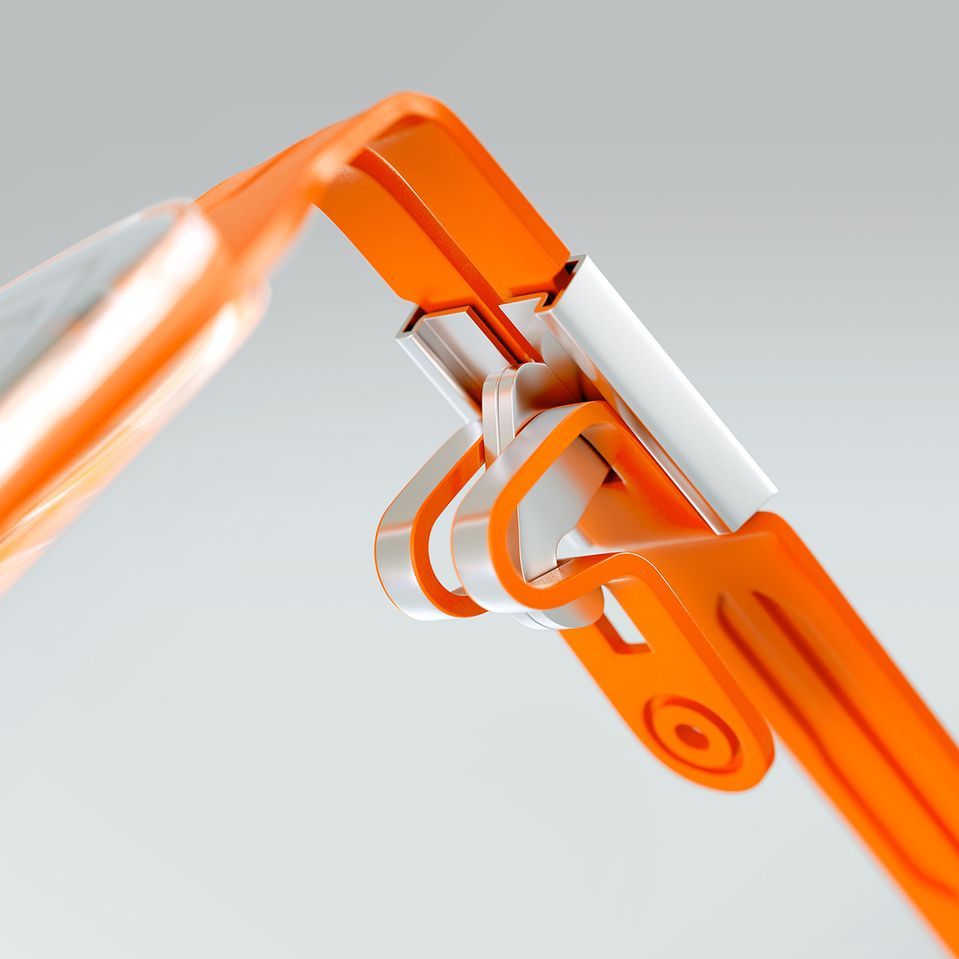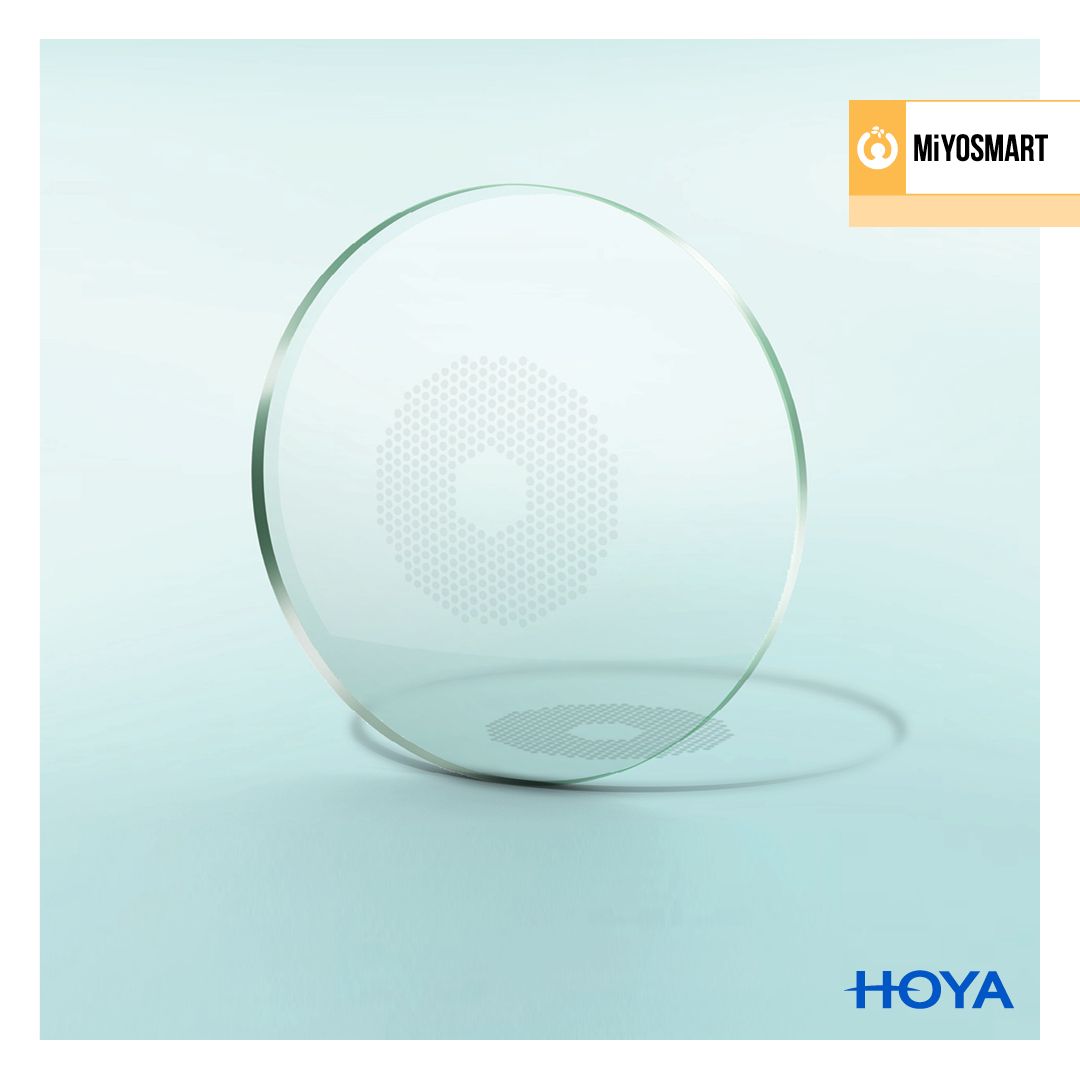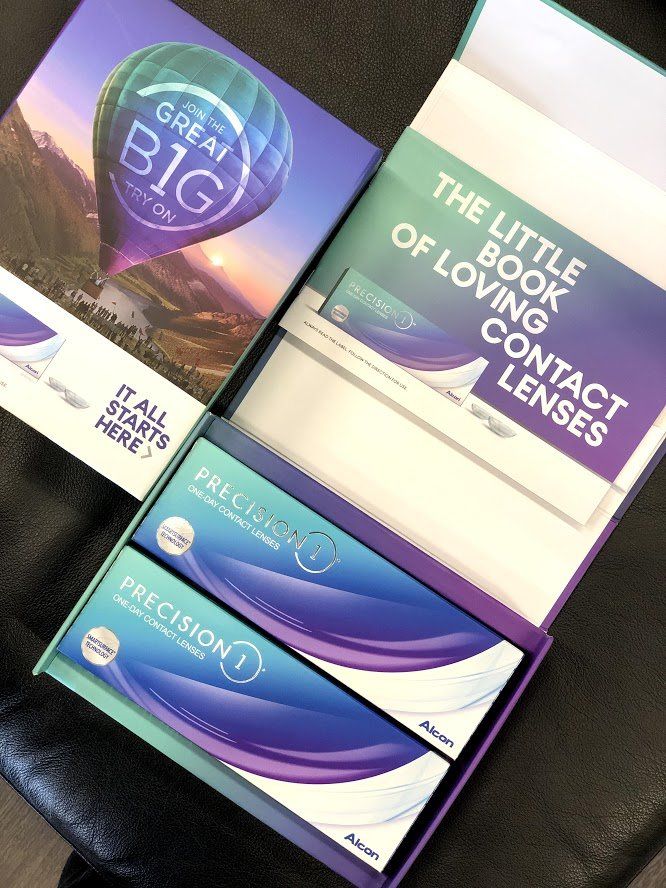LATEST NEWS
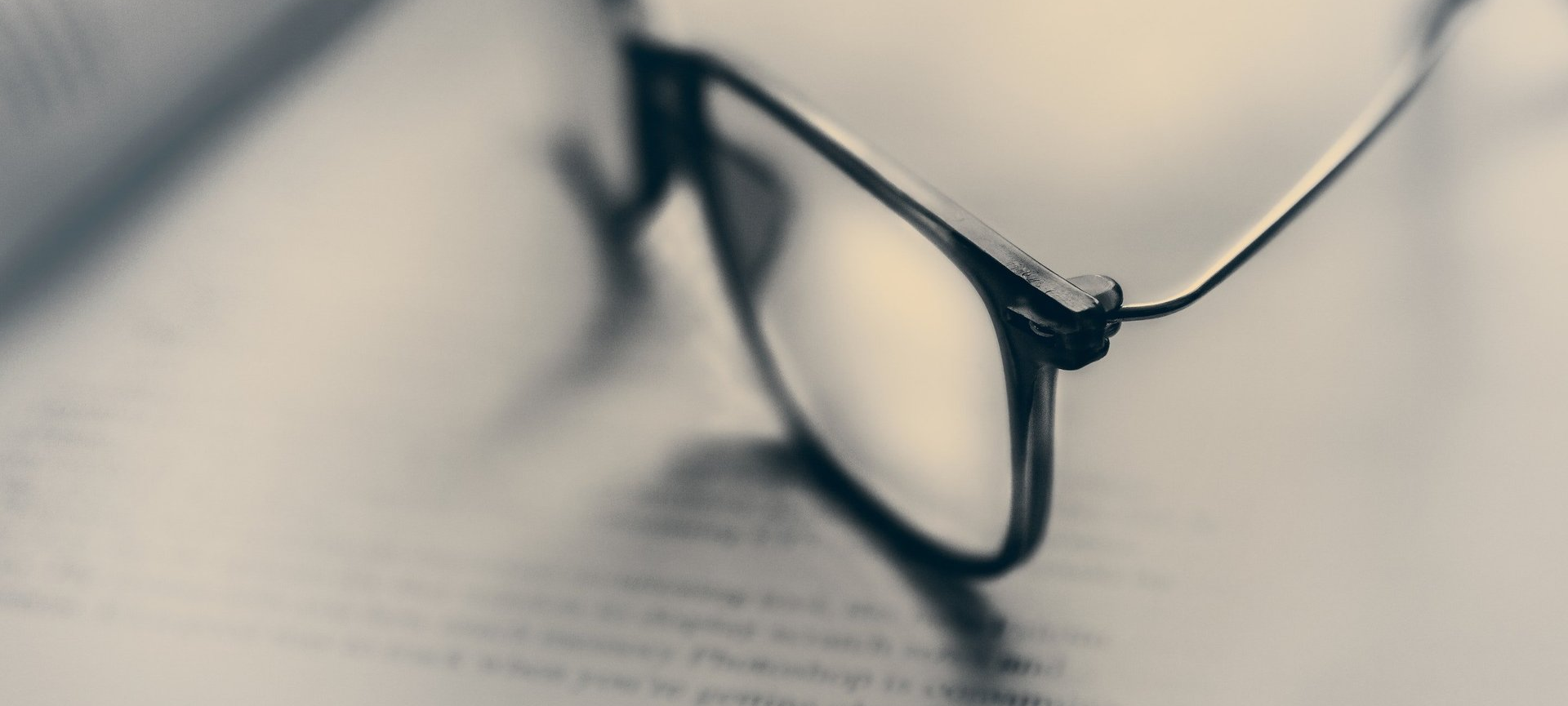
Latest News
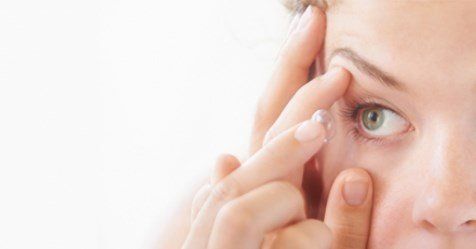
22 Apr, 2020
1. You Can Keep Wearing Contact Lenses. There is currently no scientific evidence that contact lens wearers have an increased risk of contracting COVID-19 compared with glasses wearers. Consult your eye care practitioner with questions. 2. Good Hygiene Habits are Critical. Thorough handwashing and drying are essential, as well as properly wearing and caring for contact lenses, ensuring good contact lens case hygiene, and regularly cleaning glasses with soap and water. These habits can help you stay healthy and out of your doctor’s office or hospital. 3. Regular Eyeglasses / Spectacles Do Not Provide Protection. No scientific evidence supports rumors that everyday glasses offer protection against COVID-19. 4. Keep Unwashed Hands Away from Your Face. Whether you wear contact lenses, glasses or require no vision correction at all, avoid touching your nose, mouth and eyes with unwashed hands, consistent with World Health Organization (WHO) and U.S. Centers for Disease Control and Prevention (CDC) recommendations. 5. If you are ill, temporarily stop wearing your contacts and use your glasses instead. Once you return to full health and have spoken with your eye doctor, you can start again. Make sure to use new contact lenses and a new lens case. source: https://core.uwaterloo.ca/COVID-19/
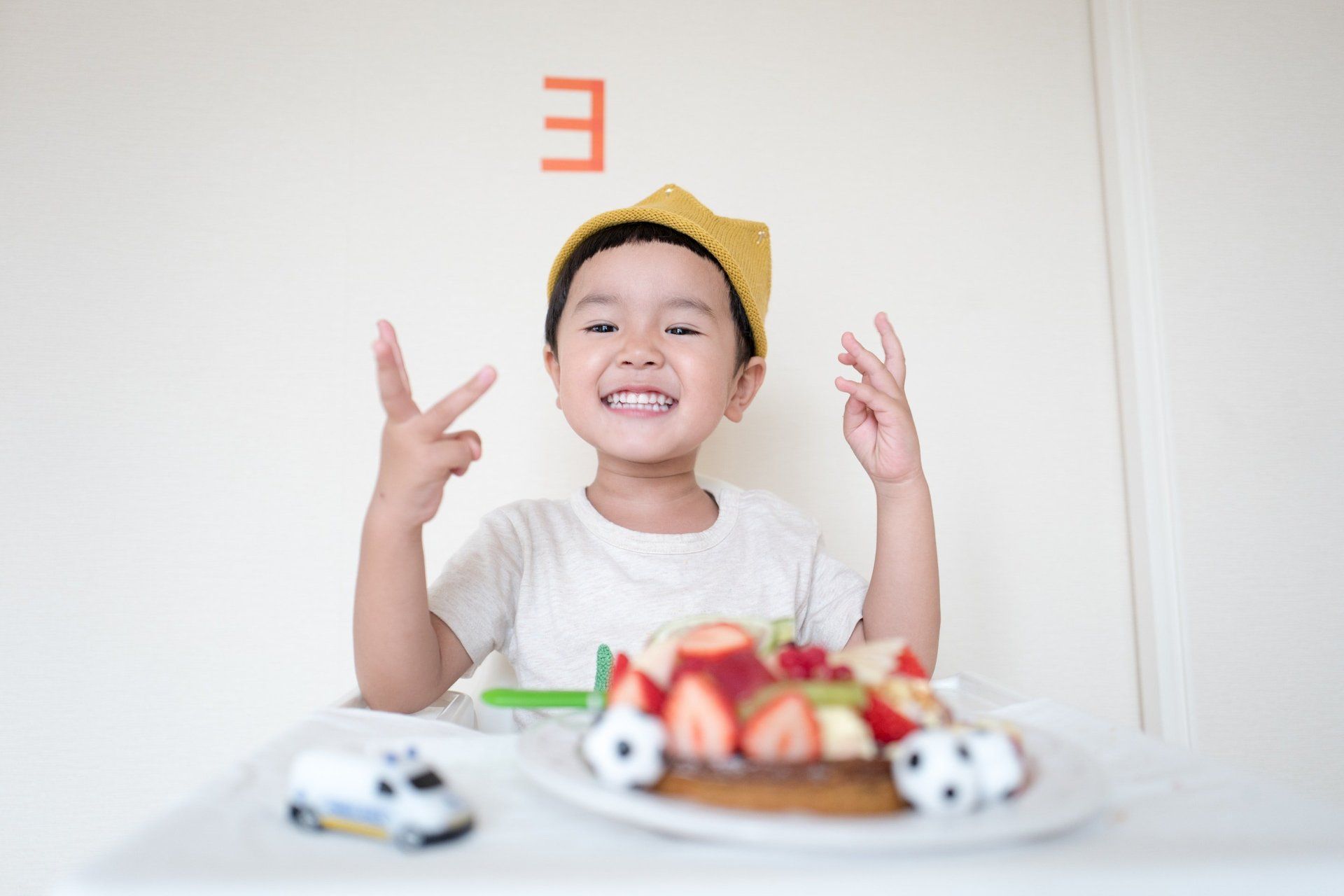
18 Mar, 2020
How do my child’s eyes develop? Babies will have their eyes tested at birth. As they grow, many leaps in vision occur. Initially, babies learn to use both eyes together and begin by focusing on close objects, such as your face and toys that grab their attention. As their eyes develop, they will start to focus on objects further away and begin to use depth perception. This is a very important time in your child’s development, as they learn and develop the good visual skills they will need in the future. How can I tell if my child has good vision? Sometimes it can be difficult to tell how well your child sees, especially when they are very young. Children often assume that how they see is normal. A visit to the optometrist will check that their eyes are healthy and vision is developing as expected. At what age should children have their first eye examination? We recommend that all children have a full eye examination with an optometrist before starting school and regularly (every two to three years) as they progress through primary and secondary school.
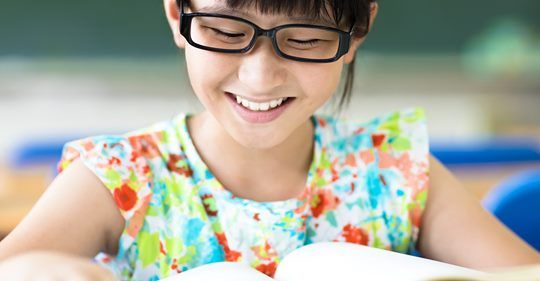
04 Feb, 2020
Myopia can have a serious effect on a child’s quality of life and learning, and it’s estimated that by 2050, 50% of the world’s population may be myopic.1 If your child complains of blurry vision, you should know how you can test for, prevent and manage myopia. Important visual skills for children Sight is a crucial part of a child’s development, and child vision problems can influence their development and learning abilities. According to the American Optometric Association (AOA), children should possess the following visual skills to perform developmental activities such as reading, studying, and participating in sports and physical education: Visual acuity Your child should be able to see clearly at close, intermediate and far distances. Think of the activities this enables them to perform, such as looking at a projector or black board (far), working at a computer (intermediate), and reading a book (close). Focusing Maintaining clarity when the distance to objects change. For example, copying lines written on a board into a book on the child’s desk. Tracking Following something that’s moving, such as a ball, and being able to keep the eyes “on track” when moving from one object to another. This is also an essential skill needed for moving the eyes between lines when reading. Eye teaming Any child should be able to use both eyes together, coordinating them when reading. This skill is also necessary for judging depth and distance on the playground or when the child participates in sports. Later in life, this is an essential visual skill needed for driving. Eye-hand coordination When drawing or writing, or catching and throwing a ball, children must be able to perceive visual information and use this to direct their hands. Visual perception This is the brain’s ability to make sense of what is seen. It’s an essential skill needed for building puzzles, drawing, cutting, reading and writing, as well as everyday tasks such as getting dressed or finding missing clothes or toys. Children learn through sight, and child eye problems will influence their development. Children learn through sight, and child eye problems will influence their development. Signs of learning-related visual problems If your child is complaining of blurred vision or struggles with any of the above visual skills, it may be a sign of a vision problem. Research shows that there’s a link between learning problems and certain visual factors, and this is described as learning-related visual problems,2 the symptoms of eye problems in children include: Eye strain Blurred vision Headaches Nausea Dizziness Excessive blinking and eye rubbing Squinting Covering one eye to see better A change in school performance Tiring easily when doing homework or reading Using a finger to track words when reading Tilting the head to see better at a distance or up close To pick up on these symptoms as well as the possible causes of a learning disability in time, it’s important to keep a close watch on your child when they read, do homework or play sports. Communicate with their school teachers on a regular basis, and ask them about your child’s developmental progress – they may be able to identify signs of a visual problem that you won’t notice at home. Can visual problems cause learning disabilities? Keep in mind that learning problems are complex, and vision may not be the only factor influencing your child’s educational progress. For example, learning disabilities, dyslexia and vision were previously believed to be linked, and many theories suggested that visual dysfunctions were to blame for dyslexia. However, the American Academy of Paediatrics explains that vision is a secondary form of reading difficulty, and that it should be separated from learning disabilities such as dyslexia. If your eye health professional doesn’t diagnose myopia or any other visual impairment, your child may have a learning disability and you should consult a specialist in childhood development such as an educational psychologist, an occupational therapist, or a paediatrician. Is it possible that my child has myopia? Although there are several learning-related visual problems that may cause the symptoms mentioned above, myopia (short-sightedness) is one of the more prevalent visual problems in children. Studies have shown an increase in the global occurrence of myopia. Currently around 30% of the global population is myopic, and projections indicate that by 2015, 50% of people will be myopic.1 In urban areas in Asia, 90% of young people develop myopia before the age of 20.2 A recent and well-known study called the Sydney Myopia study conducted on Australian school children also suggests that myopia is becoming more prevalent among children and teenagers,3 and according to the My Kids Vision organisation, Myopia among Australian 12 year olds has doubled in 6 years. To summarize, various sources suggest that overall, myopia has reached epidemic proportions,4 and every parent should be concerned and aware of this. Furthermore, Myopia can progress to high-level myopia, which leads to a higher risk of eye problems such as retinal damage that may even result in blindness.5 If your child shows any of these symptoms, or you suspect that he or she may be myopic, it’s important to consult your eye health professional for a proper evaluation and possible diagnosis. What exactly is myopia? Myopia is short-sightedness or nearsightedness, meaning that a person with this condition can see nearby objects clearly and in focus, but faraway objects appear blurry and out of focus. Let’s take a step back and consider how the eye works in simplified terms. Light enters through the pupil, and in order to see clearly, these light rays must be bent into a precise point of focus by the lens to reach the retina at the inner back surface of the eye. This is called refraction. Myopia is described as a refractive error, meaning that light entering the eye doesn’t bend properly. So, when the eyeball grows too quickly, or starts growing again in adulthood, it becomes elongated. Light entering the eye reaches its point of focus in front of the retina, making objects at a distance appear blurry. Refractive errors can also occur when the cornea and lens are too curved relative to the eyeball. What causes myopia? Various lifestyle, environmental and genetic factors are associated with myopia, including: Near work Visually demanding tasks such as reading and writing, and the time spent by children doing these activities have long been considered a potential cause of the development of myopia. Digitalisation Watching TV, playing or working at a computer, on a smartphone or tablet is also considered near work. Children today are digital natives, and they spend a large amount of time operating digital devices. Urbanisation Research has shown that myopia is more common among children living in inner city-urban areas compared with outer suburban areas because of more indoor activities and consequently the lack of natural light.6 Lack of natural light Natural light is essential for healthy eye development, and due to urbanisation and the high demands of schoolwork, children tend to spend less time outdoors. Research suggests that children who spend more time outdoors have a lower chance of developing short-sightedness.7 Higher level of education Studies suggest a link between an increase in the occurrence of myopia and educational pressure, linked to longer times spent indoors, completing work at near distances. 8 Hereditary and genetic causes If one or both parents are myopic, there’s a bigger probability of the child being myopic. Studies have also shown that 90% Asian people living in urban areas develop myopia before the age of 20.9 How often should I have my child’s eyes tested? If your child shows any of the abovementioned symptoms, or you suspect that he or she may be myopic, it’s important to take them for an eye test as soon as possible. This is a preventative measure, and if potential eye problems are detected early on, the prognosis may be more positive. Have your child’s eyes tested on a regular basis, even if they have no obvious visual problems. The first eye examination should be between the ages of 2 and 3, and this must be followed with another one before they start school. Following that, make a point of taking them for an eye test every 2 years. If there’s a family history of myopia (parents or siblings have been diagnosed) or any form of defective vision, the child must be examined as soon as possible between the ages of 6 months and 1 year, and then regularly afterwards. Your eye health professional will be able to advise you on the frequency of eye tests needed. If your child has been diagnosed with progressive myopia, they should visit an eye health professional once every 6 months. My child has been diagnosed with myopia, what now? Although progressive myopia can’t be stopped, the condition can be managed and treated. There are various treatments available, and the rate of success will depend on the individual. Nearsightedness is frequently corrected with surgery in adults, and you may have heard of popular and effective laser refractive surgeries such as LASIK surgery. However, children’s eyes are still developing and the myopia can continue to progress, so this type of treatment is not a suitable option for them.10 Myopia treatment options for children include: Soft contact lenses Multi-focal, soft contact lenses are commonly prescribed to treat myopia progression. Such lenses have different optical zones, each dedicated to providing myopia correction and control. This treatment has the same side effects associated with wearing contact lenses, including lower eye oxygenation, infections and irritation. Orthokeratology As explained above, myopia is a refractive error, and to compensate for the eye’s refractive error, an eye doctor may prescribe specially designed contact lenses that will alter the shape of the cornea.11 This is called Orthokeratology (OK) or Corneal Reshaping Therapy (CRT), and the aim is to correct or manage the progression of myopia with rigid contact lenses worn at night. Research into the success of this treatment is ongoing, and there are some serious side effects associated with it, including eye irritation and infections. Eye drops, atropine and pirenzepine Pharmaceutical treatments doesn’t restore vision, but rather assists in the management of myopia progression. It’s effective only for the duration of use, and research into the long-term side effects and permanent efficacy of such treatments is ongoing. Standard vs myopia-specific glasses Standard glasses for children are often prescribed, and it may correct your child’s vision for as long as they wear it. Although this treatment doesn’t have any serious side-effects, it doesn’t slow the progression of myopia. Probably one of the more comfortable management tactics, specific myopia management lenses simultaneously correct and manage the progression of myopia without any side-effects. Lenses such as ZEISS MyoVision Pro are specially developed for children’s growing eyes, and are ideal for kids between the ages of 6-12. How can I protect my child’s eyes? As explained above, environmental and lifestyle influencers are linked to the development of short-sightedness in children. If not treated and managed properly, myopia can progress to high-level myopia, and healthy vision can deteriorate due to a number of influencing factors. It’s therefore essential to protect your child’s eyes – whether they’ve been diagnosed with myopia or they have completely healthy vision. In addition to consulting your eye health professional on the most suitable myopia treatment for your child, here’s what you can do: 1// Send the kids outside Let your child play outdoors for at least one hour per day. Research shows that outdoor activity reduces the progression of myopia in children. Your child doesn’t necessarily even have to do sports or physical outdoor activities – it simply seems that more time spent outdoors decreases the risk of myopia developing or progressing. 7 2// UV protection for the skin and eyes We tend to focus on protecting the skin from harmful UV rays, but did you know that UV also poses a threat to eye health? When your child spends time outdoors, make sure they wear sunglasses or clear lenses that offer the highest possible UV protection. 3// Manage screen time When working at a computer, your child should sit upright, and as far away from the screen as possible. Also keep an eye on the amount of time they spend on digital devices – of course it’s important to complete homework and tasks, but intersperse these activities with regular breaks, preferably spent outdoors. 4// Make sure their eyes get enough rest To ensure that your child’s eyes get enough rest during near-work activities, the 20/20/20 rule is an easy guideline to follow. Get them in the habit of looking up every 20 minutes and focus on an object about 20 metres away for 20 seconds. 5// Follow a balanced diet A balanced diet with a good combination of vitamins and minerals is essential for healthy development. Your child’s daily diet should include at least 3 portions of fresh fruit and vegetables, and make sure that they drink 6-8 glasses of water per day. 6// Enough sleep Sleep is another essential component of your child’s general development, and enough sleep may be beneficial to their vision. The sleep foundation recommends 9-11 hours of sleep for school aged children (6-13 year olds), and 8-10 hours for teenagers (14-17 year olds). 7// Switch on the lights Near work must be done in good light. Make sure the space where your child plays and does homework gets enough natural light during the day, and invest in a good reading lamp for night-time work and activities.The body content of your post goes here. To edit this text, click on it and delete this default text and start typing your own or paste your own from a different source. source: https://www.zeiss.com.au/vision-care/better-vision/understanding-vision/if-your-child-has-blurred-vision-it-could-be-a-warning-sign-of-myopia-short-sightedness-.html
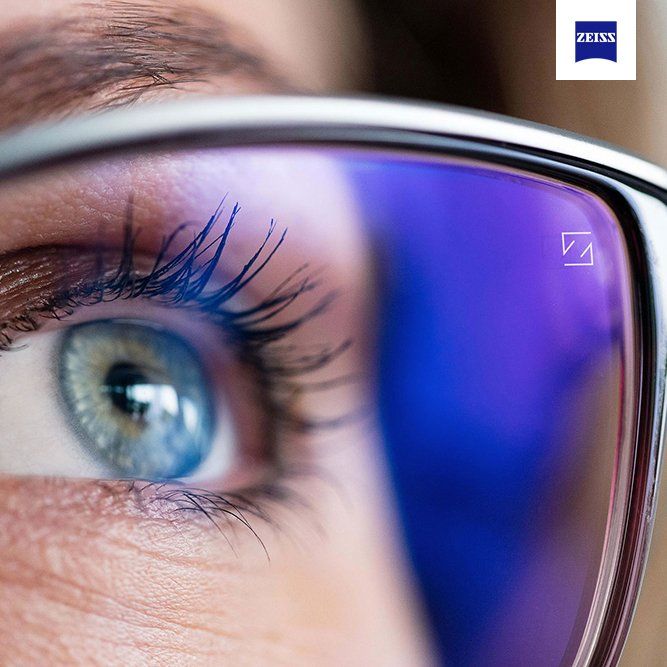
13 Nov, 2019
Today's modern prescription spectacle lenses really are a miracle of technology. If you want to enjoy your spectacles for as long as possible, it's not only important to take good care of them. It's also important to protect them from damage caused by harmful external factors. Whether you're short-sighted or far-sighted, the right prescription spectacle lenses make sharp vision easy. You'll be able to enjoy your spectacles for many years if you have them specially adapted to suit your individual prescription by an optician. But one important condition of this is that you'll need to take proper care of your spectacle lenses, and handle them sensibly. This is because improper handling of technically advanced modern spectacles can lead to the lenses becoming scratched, or to damage being caused. This is particularly true in the case of plastic lenses. High-tech coatings do offer a maximum level of protection, even for very thin and fragile plastic lenses, but they can still be scratched. The result is that the lenses become less clear, it gets more difficult to see through them, and vision becomes less sharp. But this doesn't have to happen. Here are some helpful tips: Microfibre lens cloths For routine care of your spectacles, it's important only to use lens cloths made from microfibres. They are available from any optician's store. Dust and dirt cling to them. This process, known as dry cleaning, removes particles of dirt and dust and can be carried out at any time, even when you're on the move. If the spectacle lenses are more heavily soiled, the first step you should take is to wash them in lukewarm water. A drop of washing-up liquid makes the cleaning process even more effective. But be careful: don't use oily soaps. Oily deposits may be left behind on the lenses, causing irritating smears. Lens cleaner sprays, available from opticians, are also very effective. After being cleaned with the spray, the lenses can then be wiped dry with a lens cloth. Your clothes aren't a suitable replacement for a lens cloth Prescription spectacle lenses don't get along well with T-shirts, jumpers, and other textiles. So even if it's the easiest, most tempting option, it's never a good idea to wipe your spectacles with your clothes. The danger of scratching the lenses is too high. The fact is that scratches still can't be buffed out of lenses. So the damage caused to them will be permanent. Now and again, it's worth making a trip to an optician's store to have your spectacles cleaned. The optician has special equipment which can be used to clean spectacles thoroughly and gently. The most important of these is the ultrasonic bath. In this process, the spectacles are placed in a special container. In the space of a few minutes, the spectacles are cleaned extremely efficiently using ultrasonic vibrations. The process cleans not only the lenses, but also the frame. Devices for use at home have now become available. If you want to buy one, you would be well advised to visit a specialist store for expert advice. This is because the best cleaning results can only be achieved by machines which operate at a very high vibration frequency. Beware of high and low temperatures As well as taking proper routine care of your spectacles, it's also important to handle them correctly. It seems obvious, but here it is again for good measure: never place your spectacles face down on the lenses. Instead, fold them up and put them down so they rest on the frame. To avoid the annoyance of searching for your spectacles, it is advisable to always put them down in the same place. Then they'll always be there, making it easy to find them. It's worth pointing out at this stage that seats, chairs, and sofas are completely unsuitable places to put spectacles. It's just too easy to sit on them by accident. If you aren't going to be wearing your spectacles for a long time, such as during the night, it's best to store them in a suitable spectacles case. This advice is especially relevant for dog owners. You might find that your four-legged friend enjoys chewing the frames, and even the lenses, of your spectacles. The result won't just be annoying for you; it could also be dangerous for your dog. Something else that spectacles and spectacle lenses really don't like is high temperatures. So whether it's summer or winter, you should never leave your spectacles out in direct sunlight. In particular, you should avoid leaving them on the dashboard of your car. Radiators won't do your spectacles any good either. And if you visit a sauna, it's best if your spectacles don't join you. The cold months of the year can also damage spectacles: spectacles can warp if they are exposed to very cold temperatures. So it's not a good idea to leave them in your car overnight in winter. In general, a high-quality spectacle lens coating can make your life, and your spectacles cleaning routine, much easier. A ZEISS DuraVision lens coating, for example, makes your spectacle lenses water- and dirt-repellent and gives them antistatic properties. In spectacle lenses with a DuraVision coating, the lens surface is smoothed to such an extent by the coating that dirt particles or droplets of water simply cannot cling to it so strongly. Because of this, lenses which have received this treatment are easier to clean. They also need to be cleaned less frequently. Even greasy fingerprints can easily be removed from the prescription spectacle lenses. Get your ZEISS DuraVision coated lenses at OPTICALINK today!

01 Nov, 2019
Don't risk your eye health To protect the skin, we wear sunscreen, but we really don't have a lot of options when it comes to protecting our eyes against harmful UV rays. It is often forgotten that UV rays are also harmful to our long-term eye health and that it can cause damage to the area around the eyes. Unfortunately, only 1 out of 5 lenses fully block UV radiation up to 400 nm. That means the other 4 out of the 5 lenses don't block or only marginally block UV radiation. As a result, UV rays are transmitted through the lens and can potentially harm both your eyes and skin. All ZEISS lenses prescribed at OPTICALINK utilise UVProtect Technology that block harmful UV rays up to 400 nm, giving you the same standard of UV protection premium sunglasses provide. Ask us how!! Upgrade to sunglasses level UV protection at no extra cost now!!! (photo credit: www.zeiss.com.au)
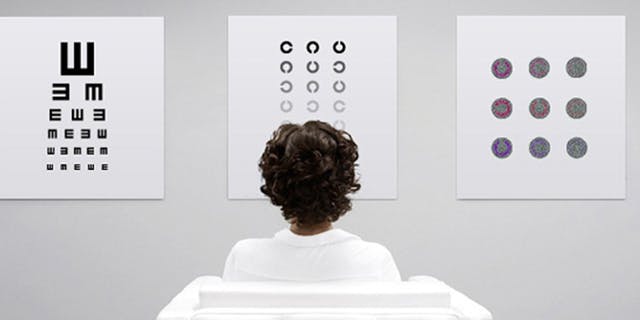
09 Sep, 2019
Why it's so important for babies and children to have eye tests on a regular basis. Just like adults, children perceive about 80 % of their impressions visually. Good, sharp vision is therefore fundamentally important for children development. What should parents know before visiting the ophthalmologist or optician for the first time? BETTER VISION gives you some tips on finding the perfect solution for young spectacle wearers. The first eyesight test Strange as it may sound, it's never too early to have children's eyes examined. It's not always easy to detect whether a child has impaired vision or not. Parents generally notice if a child is having problems walking, before they notice any vision problems. Babies and young children are not able to detect or communicate their impairment. Even older children have a limited ability to differentiate sharp from fuzzy. Usually, parents only notice if a child's visual acuity is dramatically reduced by more than 60%. However, the earlier vision impairment is corrected among children and infants, the better and more successful correction will be. Remember that binocular vision can only fully develop when the image on the retinas of both eyes is equally sharp. Similar to learning to walk and speak, babies and young children learn how to see through constant practice. Only, it happens much earlier with vision, since the first time they open their eyes after birth when our little ones begin their visual experience. Children should have their first eye test within the first ten days of life. Correcting vision problems early, when the eye is not yet fully formed, is more successful than later. In addition, certain visual impairments that cannot be corrected later can be minimised, or even wholly avoided, if detected and treated early. Premature babies in particular have often visual impairments due to the reduced time spent developing in the mother's womb. So visual acuity should be checked while the baby is still in the incubator. For babies and young children, the exam is performed using an objective procedure called the skiascopic measurement of visual acuity, where the doctor places a drop of atropine derivative into the child's eye. This dilates the pupil and disables accommodation (accommodation is the eye's ability to adjust in order to make objects at different distances appear sharply on the retina), which allows the doctor to pinpoint any potential visual impairments. Spectacles or even contact lenses can be prescribed and adapted for premature babies, babies and young children. Special spectacle frames and lenses are now feasible for even the smallest faces; some are even custom-produced by opticians. After the first examination, parents should have their children's vision examined regularly – ideally once per year. It's also recommended for parents to observe their children's eyes and their visual behaviour. The ophthalmologist should be consulted if changes occur, such as strabismus, frequent rubbing of the eyes, lack of eye contact, cataracts, blinking, or among school-age children, need to hold the paper too close when reading or writing and copying incorrectly from the board. Choosing an ophthalmologist and optician Just like the choice of paediatrician, ophthalmologists and opticians should be chosen carefully with a view to how they treat young and older children. Always consider how child-friendly the physician or optician is and how much experience has with children. There's nothing worse than when the therapist makes your child feel afraid. Spectacles should never be "sold" to children as something negative or like a burden. Instead, emphasise that spectacles are a great thing! Spectacles can make magic: you can suddenly see really small things. In addition to a friendly and easy-going manner with children, the specialist's expertise is obviously a decisive factor. Make sure that they first perform a child-friendly, yet complete an initial assessment (medical history). As for adults, the optician should speak with you and your child specifically about the situations in which the vision problems usually occur, the situations in which the child will need the spectacles the most, whether the child is very active, plays a lot of sports, reads a lot (including in bed during the evening by twilight)...The more specific you and your child are about these daily habits, the better it will be when selecting and adjusting the vision aid. The optician should be prepared to have time and patience when consulting with you and your child. Listen to what the child wants when choosing the spectacle frames. Avoid compulsion – ideally the child should accept the spectacles and put them on by him or herself. Ask for detailed information about spectacle lens refinements, such as a coating for increased hardness or an anti-reflective coating. These additional coatings don't have to cost a lot more, while they can make the spectacles more durable and long-lasting – and make seeing more pleasant for your child. Look for shatter-proof spectacle lenses and frames with temples and nose bridges which are safe for children. Please notice, that some opticians have special subscription offers for children's spectacles for you to take advantage of: "The spectacles that grow with you". These offers allow you to continue to obtain new spectacles when your child grows out of the old ones – for a fixed price. Take advantage of the aftercare offers and inspections for children's spectacles. A professional spectacle cleaning or inspection as to whether the spectacles sit correctly, plus any necessary correction, is very useful, especially for active children, and also increases the spectacles' service life. Little vision games for children 1. Observe precisely! You can play this game with multiple children, but need at least three. Ask the children to look at each other very precisely and observe. After five minutes, choose a child and ask them to leave the room. Cover another child with a blanket or sheet so only their head is visible. Invite the child who has gone outside to come back in and ask them to describe as precisely as possible the clothes under the cover. The child receives one point for every correct description. You can have the children change clothes or put on other accessories for the next rounds of the game. 2. I see something you don't see For this game, you will need a homemade telescope; it's best if you create this out of two toilet paper rolls. The nose bridge in the middle can be made of a piece of cardboard or an empty box of matches, for example. You need at least two people for this game. Place several objects, like toys, shoes or something similar together in a pile in the middle of the room. Ask one of the children to hold the "telescope" in front of their eyes and to look at the pile of objects. The child begins to describe one of the objects. The first child to correctly guess what object it is wins the round and takes a turn with the telescope. 3. Spaghetti You will need 10 long strings (e.g. different types of wool yarn or gift ribbons). Make sure that two strings are the same colour. First, have the children help you mix up the strings well. Now have one of the children pick out the two strings that are the same colour from the spaghetti pile.
Address
- Suite 3, G/F 377 Sussex Street
- Haymarket
- NSW 2000
Phone
Email
Address
- NEW LOCATION:
Suite 3, G/F 377 Sussex Street - Haymarket
- NSW 2000
Phone
Email



